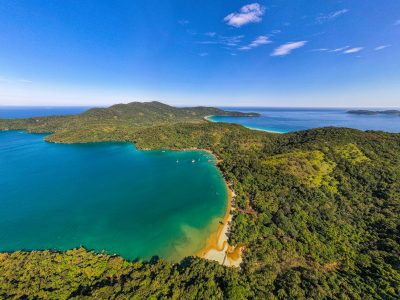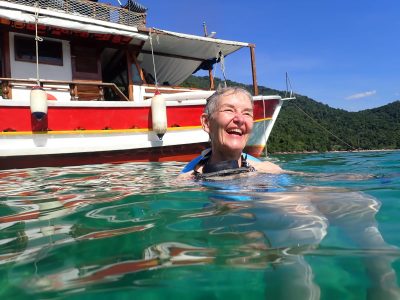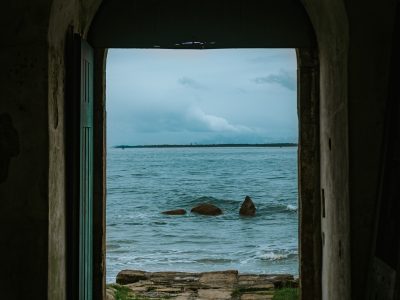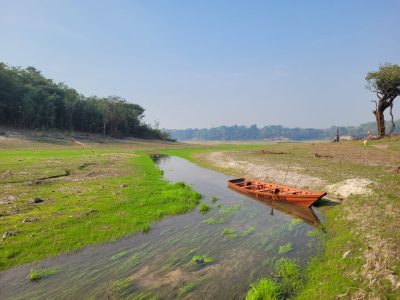Exploring the Brazilian Amazon and experiencing magical days in the tropical rainforest is a dream for many tourists visiting the state of Amazonas. Under normal conditions, tourism operations run smoothly throughout the year, with few interruptions. Traditionally, the dry season in this biome offers unique opportunities to admire the stunning white-sand beaches that emerge along the banks of the Rio Negro, as well as to enjoy waterfalls and other iconic Amazonian summer landscapes.
However, the combination of climate change and deforestation has altered rain cycles, bringing more severe droughts that deeply affect the region and challenge the sustainability and viability of some operations. In this scenario, local communities and businesses need to adapt quickly to sustain their enterprises and support tourism, while minimizing the socioeconomic impact of this crisis.
Content Summary
The Pandemic's Impact on Local Tourism
During the Covid-19 pandemic, the state of Amazonas was one of the hardest hit. According to the Tourism and Covid-19 Survey by the Amazonas University Tourism Observatory in partnership with Amazonastur, the tourism sector in the state recorded a 66% revenue drop due to social isolation measures. Tourism agencies saw a 72% revenue decline, and the lodging sector reported a 70% reduction.
In normal times, the Amazon’s freshwater beaches and rivers attract tourists worldwide, but the pandemic severely impacted activities and halted tourism flows. Many temporary tourism guides were let go, significantly affecting the income of families directly dependent on the sector.
The destination began to recover in 2023, recording a rise in tourist-driven revenue post-pandemic, as reported by the Amazonas State Tourism Company (Amazonastur).
Although 2023 and 2024 were excellent years in terms of tourist numbers and revenues generated, they were also years of record drought, presenting a new challenge for the destination, its communities, and businesses. In the Amazon, severe drought occurs in the summer, one of the high seasons for international tourism.
Lodges Adapting to New Climate Realities
These extreme droughts dramatically alter the landscape and limit river transport, making access to various destinations more challenging. Many lodges are forced to adapt to conditions imposed by drought, which typically occurs from September to November.
Located around Lake Acajatuba, bathed by the Rio Negro, Tariri and Manati Lodges face great challenges due to climate change. To maintain access to the lodge and provide safety and comfort to visitors, Tariri built long wooden walkways, allowing tourists to reach the lodge more easily, even during the most intense droughts. This adaptation ensures that tourism remains viable and that the impact of climate change can be mitigated, reinforcing the commitment to the Amazon’s preservation.
Manati Lodge had to suspend operations for the second year in a row during September to November due to the extreme drought that prevents access to the property. However, it will be fully operational again in January, with all tours and access restored. Business owner Marília Costa, the founder of Manati Lodge, faced the challenge of maintaining her team during this downtime, leading to a deficit during what would normally be high season. Still, Marília remains optimistic and confident that, with the water levels rising in December, Manati will return to offering unique and transformative experiences to visitors, always with a firm commitment to safety and sustainability.
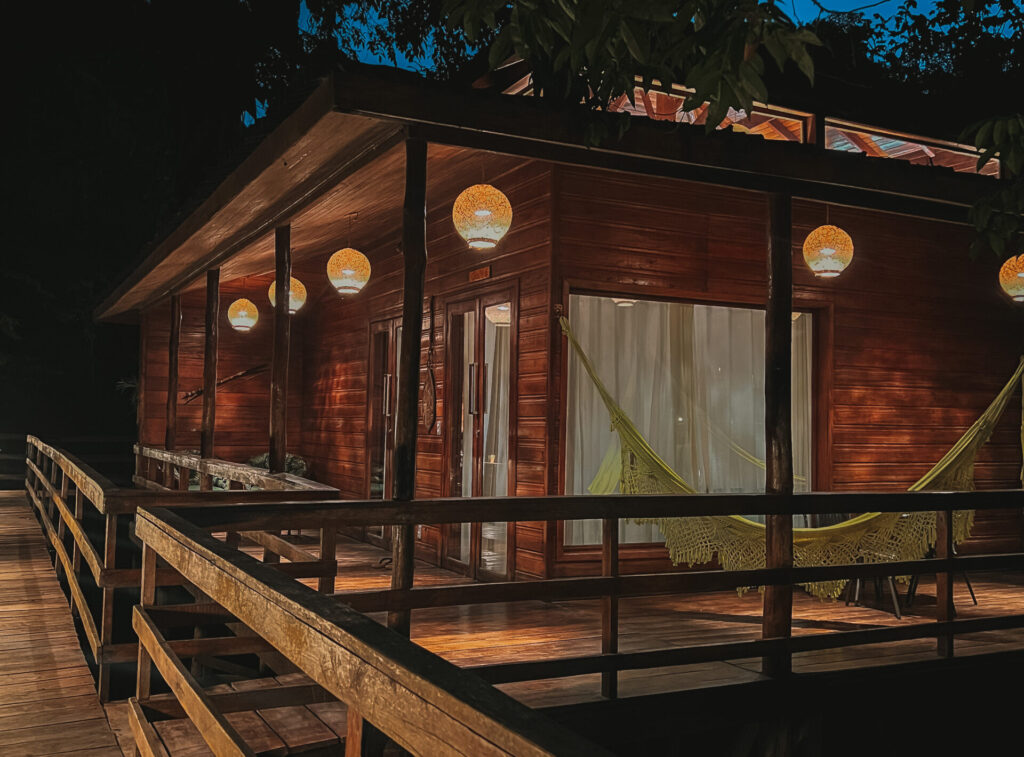
Poranduba Amazônia, a travel agency that promotes community-based tourism and is a Gondwana partner, also had to suspend operations due to the effects of the drought. Activities are expected to resume from the second week of December.
This experience takes place within the Tumbira community and offers accommodation, meals, and activities conducted in partnership with the local community, promoting community-based tourism. Tourism is an essential income source for residents of this area — located in a Sustainable Development Reserve (SDR) — who constantly seek alternative income-generating activities that foster conservation of the local environment, wildlife, and flora while stimulating sustainable community development.
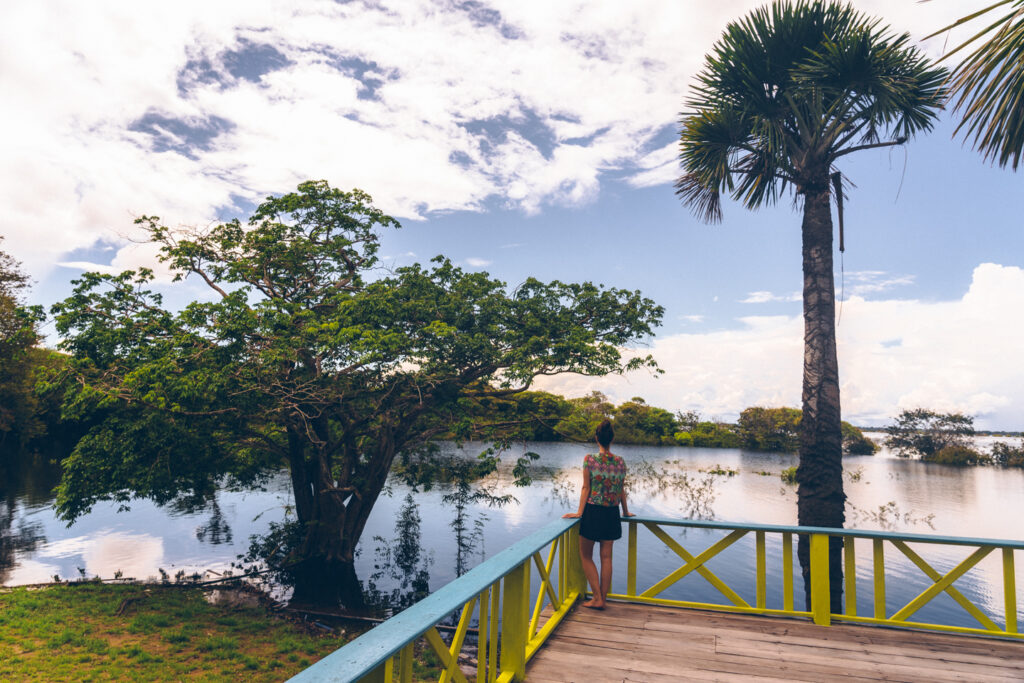
In the Autazes region, Amazon Turtle Lodge made significant adjustments to combat the heat and drought. A pool was constructed to alleviate discomfort during the Amazonian summer, providing guests with a refreshing option in intense heat periods. The lodge also built access walkways to ensure safe visitor circulation.
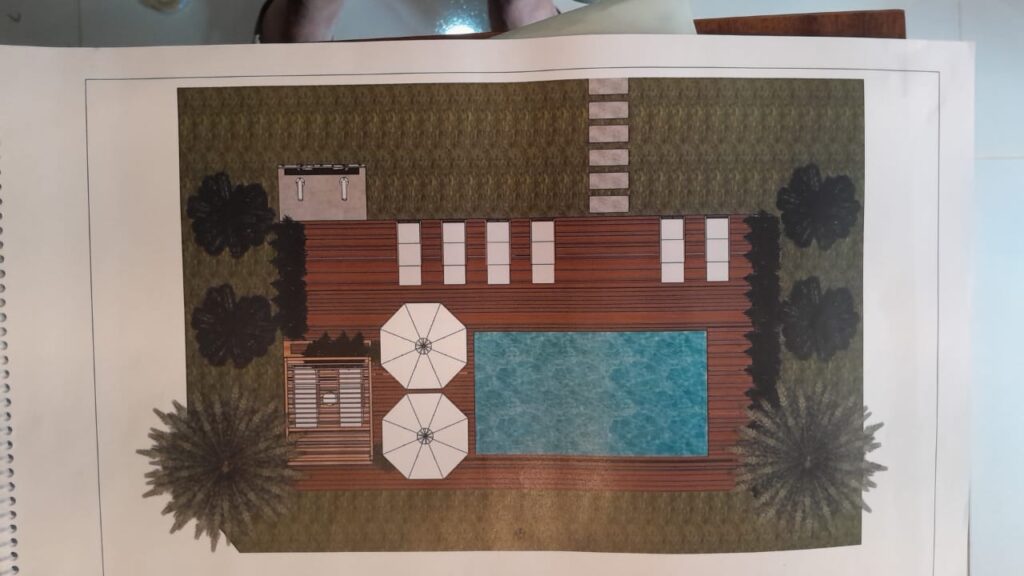
Located in the Autazes region, Amazon Premium Lodge and Juma Lodge remained open during the drought season. With expanded access walkways, these lodges adapted to the river level variations, offering tourists a comfortable and safe experience. Although rivers in this region are generally less affected by drought, the past two years have been challenging, making adaptations essential to secure visitor access and safety.
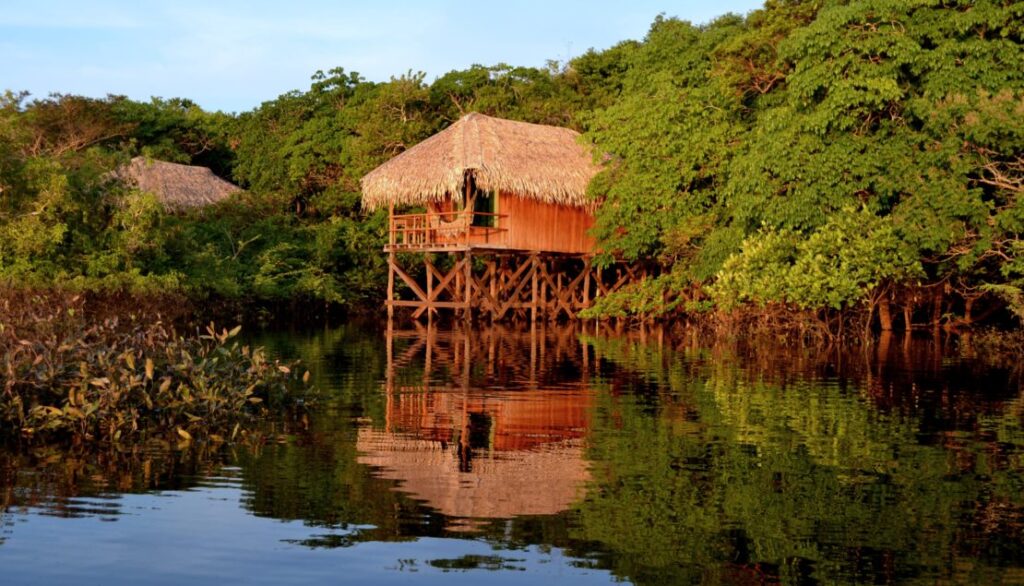
Tupana Lodge stands out for its environmental protection and sustainable tourism efforts. Enhancements to the wildlife observation structure, coupled with local community training, promote responsible tourism practices during animal observation. Additionally, Tupana Lodge acquired two properties around the lodge to prevent deforestation by others, reinforcing its commitment to preservation. This initiative demonstrates how environmental protection and high-quality tourism can coexist, offering visitors a unique and conscious experience.
Additionally, Tupana Lodge now offers new accommodations inspired by traditional malocas, combining comfort and authenticity to create a unique Amazon experience. Each maloca is equipped with fans for a comfortable environment and private bathrooms. The porch’s rattan chairs invite visitors to relax in style, taking in a stunning panoramic view of the Tupana River amidst the Amazon rainforest’s beauty and serenity.
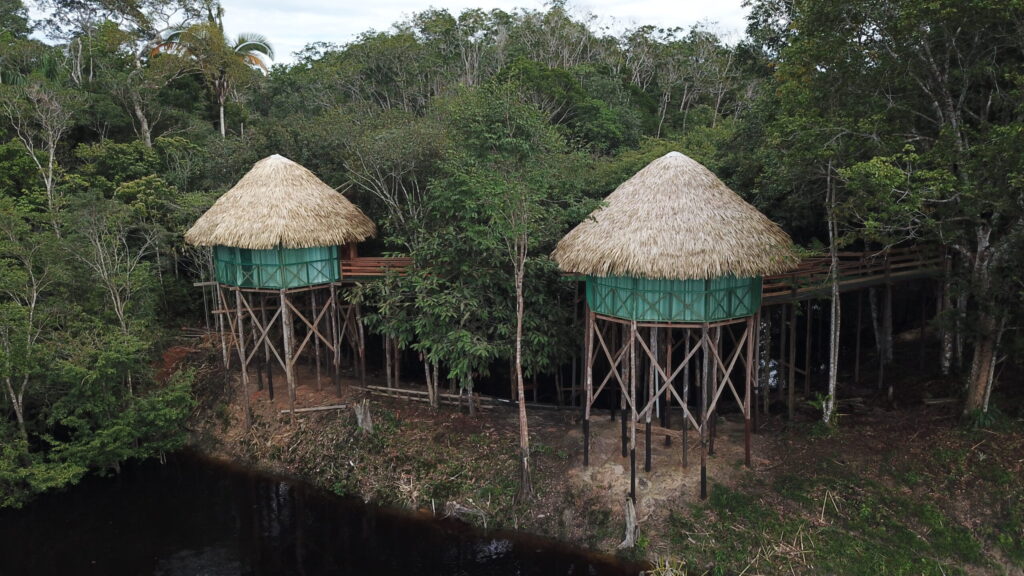
Encouraging Tourism in the Amazon as a Low-Season Opportunity
To alleviate losses due to access blockages to some beaches, communities, and enterprises during extreme droughts, a tourism incentive proposal for January, February, and March has been implemented. These months, known as the rainy season, offer visitors a unique chance to enjoy the Amazon’s natural beauty more comfortably and safely. At this time of year, the arrival of rains not only relieves drought but also creates vibrant and lush landscapes with milder temperatures.
Each Amazon beach has its particular features: some are perfect for water sports, others offer trails, and some are ideal for those seeking tranquility and a deep connection with nature.
Infrastructure improvements in certain areas also ensure that beaches remain open during the drought, providing tourists with safety and comfort. Thus, the rainy months also present an excellent option for those wanting to visit the Amazon while contributing to the region’s economic and tourism recovery.
Supporting tourism businesses that adopt sustainable practices is a concrete way to contribute to nature conservation and local development. Many local businesses, for example, engage in responsible, regenerative tourism and ecotourism, promoting the engagement of communities and visitors in environmental protection and cultural empowerment. By supporting the local economy, tourists help preserve the region’s natural and cultural treasures for future generations.
Fortunately, the rains have arrived in the region earlier than expected, bringing relief. The Rio Negro level, being regularly monitored, is already showing signs of recovery, generating optimism about a return to normalcy. The expectation is that the situation will be fully stabilized by mid-December. Until then, November should be marked by a gradual rise in river levels following the most severe drought in recorded history.
How to Contribute?
Visit and Support
Encourage tourists to choose the Amazon as a destination, directly contributing to the local economy and valuing the standing forest. By visiting, travelers enjoy the rainforest’s beauty and promote preservation, supporting communities that depend on responsible tourism.
Help Preserve
Encourage visitors to become active conservation agents by choosing conscious, sustainable tourism practices. Being a responsible traveler means understanding that the importance of visiting the Amazon extends beyond typical tourism; it is a commitment to the planet’s future.
Being a conscious traveler also means:
- Seeing It for Yourself – and Seeing It Soon
Each day is precious! By visiting now, tourists witness not only the Amazon’s natural beauty but also the urgency of preservation. Come while there is so much to see and experience the rainforest’s full splendor. - Supporting a Forest Economy
Choosing the Amazon strengthens a sustainable economy. Every stay, activity, and purchase in the local economy supports responsible tourism initiatives that keep the forest intact, fostering local development and biodiversity protection. - Not Avoiding Travel Due to Drought Concerns
Avoiding the Amazon out of fear of extreme droughts or climate change could further negatively impact the local economy and ecosystem. Through responsible tourism, every visitor strengthens the rainforest economy and ecosystem, helping maintain a cycle of protection and conservation. - Engaging with Climate-Impacted Communities
By visiting, tourists gain insight into unique, complex realities, talking to people and understanding the climate crisis’s impact on their lives. More than a trip, it is an opportunity to engage in environmental and social issues alongside communities. - Witnessing Both the Beauty and the Challenges
The Amazon is rich in beauty and challenges. Visiting the region is understanding that despite its natural charm, many communities face daily hardships with limited access to healthcare, education, and economic development. Not visiting means turning a blind eye to a problem that is both global and local. Seeing up close fosters respect and support for communities fighting to keep the forest alive.
Each visitor to the Amazon can be a transformative force, supporting forest preservation and local community development. Travel consciously, be part of the solution, and let the Amazon’s strength inspire you.

